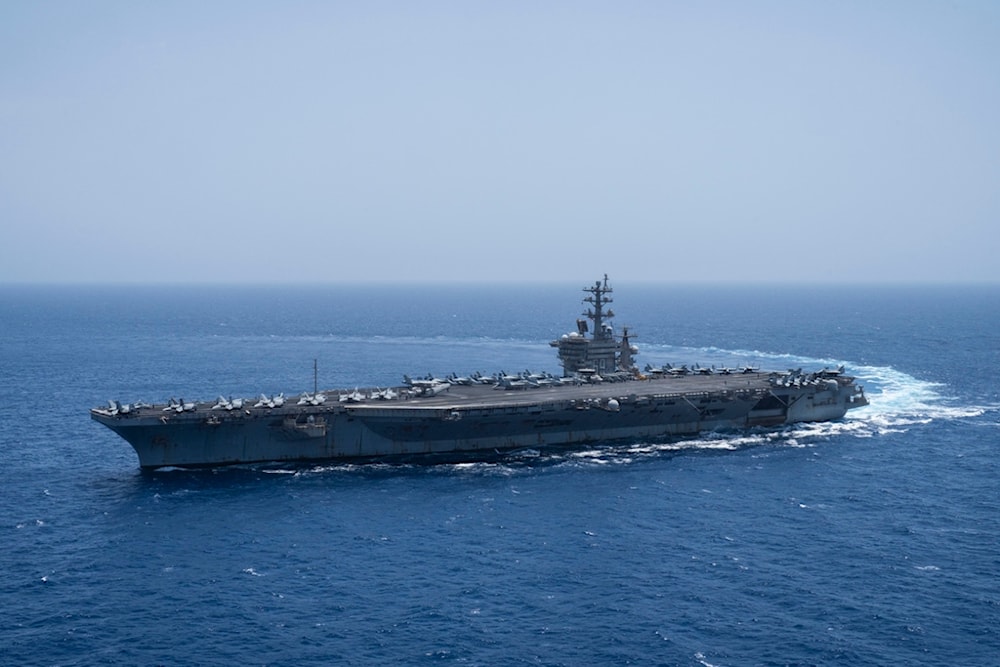USS Dwight D. Eisenhower crew faces fatigue amid prolonged deployment
At the Pentagon, leaders are grappling with whether to heed Navy calls to bring the carrier home or US Central Command's plea for an extended stay.
-

The USS aircraft carrier Dwight D. Eisenhower, also known as 'IKE', sails in the Red Sea on Wednesday, June 12, 2024. (AP Photo/Bernat Armangue, File)
ABC News reported on Wednesday that fatigue has begun to set in aboard the USS Dwight D. Eisenhower aircraft carrier in the Red Sea.
As the carrier and its 7,000-strong crew near their ninth consecutive month at sea—the most prolonged naval engagement since World War II—questions arise about sustaining such intense combat operation.
The carrier's deployment has already been extended twice, leading to growing fatigue among its crew. Concerns are further rising about possible extensions.
At the Pentagon, leaders are grappling with whether to heed Navy calls to bring the carrier home or US Central Command's plea for an extended stay. The debate hinges on the carrier's role in supporting "Israel."
US officials are now evaluating options and expect a decision soon, as per officials.
"What the carrier brings is an offensive platform that’s mobile, agile and doesn't have any access, basing or overflight restrictions," retired Marine Gen. Frank McKenzie told ABC news.
"It's sovereign US territory. You can do as you want with those airplanes on that carrier. So that gives you enormous flexibility when you consider response options across the region."
Read more: Yemen carries out three operations in Red, Arabian Seas
A recent report from the US Defense Intelligence Agency revealed that the Yemeni Resistance has conducted no fewer than 175 operations on US naval vessels, coalition ships, and commercial vessels in the Red Sea and the Gulf of Aden since November 19.
Yemeni operations have prompted 29 major energy and shipping companies to change their shipping routes in order to avoid being targeted.
As a result, container shipping in the Red Sea has plummeted by 90% since December 2023.
In response to the disruption in traditional shipping routes, alternative shipping routes around Africa have been utilized.
However, these routes add an additional 11,000 nautical miles to the journey, resulting in 1-2 weeks of extended transit time and an increase of one million dollars in fuel costs per trip.
Read more: US Navy faces most intense combat against Yemen since WWII: AP
Yemen, among the most impoverished and food-insecure countries in the world due to years of sanctions and Western-backed aggression, has been actively engaged in blockading the Israeli economy by preventing ships from reaching the occupied territories.
The purpose of doing so is to pressure the Israeli regime to halt its genocidal campaign against the people of Gaza.

 3 Min Read
3 Min Read








